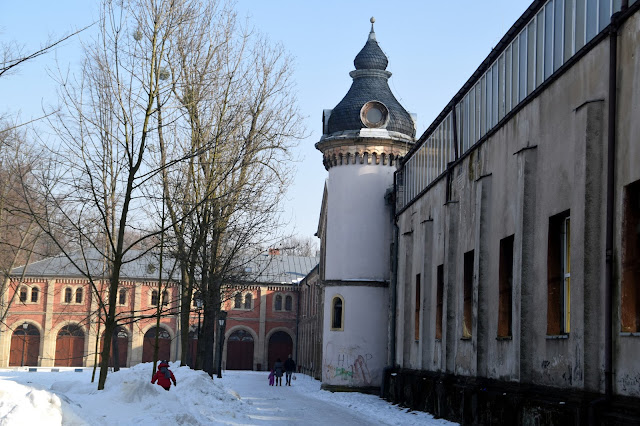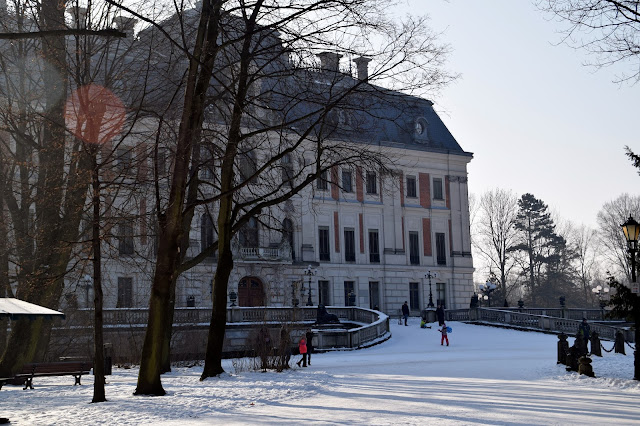Park Pszczyński currently has 156 hectares and occupies the bottom of a
shallow valley Pszczynka, once swampy and marshy, a fragment of the
slope on the north side of the valley.Castle Park covers an area 48 hectares. It was probably in the 2nd half. XVIII
in., although in the sixteenth century here was a small vegetable
garden on the west side of the castle and the zoo in the northwestern
part of the current park. Created
during the Baroque reconstruction residence, Paek referred to the multi
assumptions of the great French architect André Le Notré'a, subordinated
to the dominant building of the palace. In the mid-nineteenth century began to transform the castle garden called English Garden. Then they liquidated, among others, a main central avenue, replacing it with a vast glade, opening to a
newly built Pszczynka joints on the river and hills in the northern part
of the park.
Over time, it was transformed in the 2nd half. XIX. the park appeared all characteristic of this type of assumptions items:
the vast open scenic, picturesque clusters of trees and shrubs, many
backwaters and ponds with islands and arched bridges, open meadows and
lonely, shady trees. The
edges of ponds and canals planted trees "weep" with dangling just above
the water, limbs and twigs. Complemented park were small buildings,
most of which have survived to our times and that we visit during a walk
around the park. Wander through the alleys of this attractive place
worth watch
the trees - there are numerous great and mighty oaks, chestnut, yew,
distinguished by a simple, high trunk white pines, linden, ash, stately
hornbeams, beeches and red elm, larch, spruce silvery birches, maples
and plane
trees, and willows and tulip. Among the many interesting shrubs should
see the amazing specimens of rhododendron (rhododendron), beautifully
blooming in late spring, and no less beautiful, but smaller































No comments:
Post a Comment